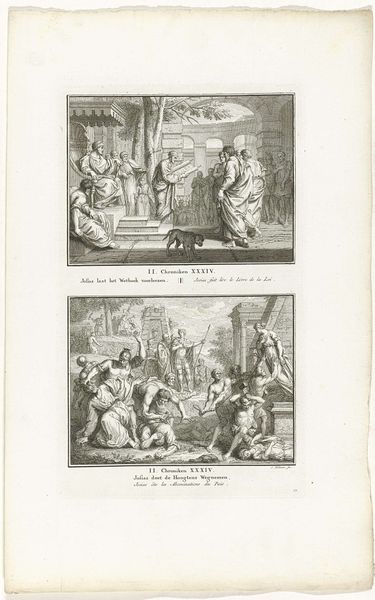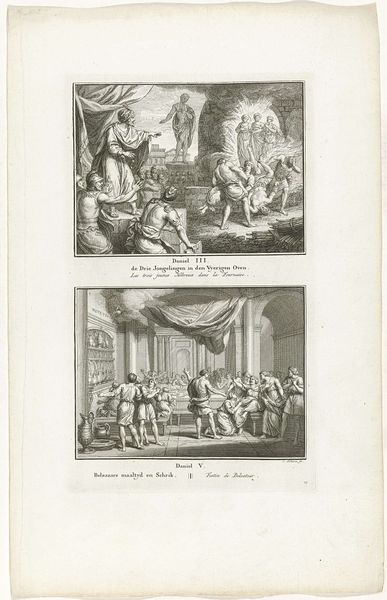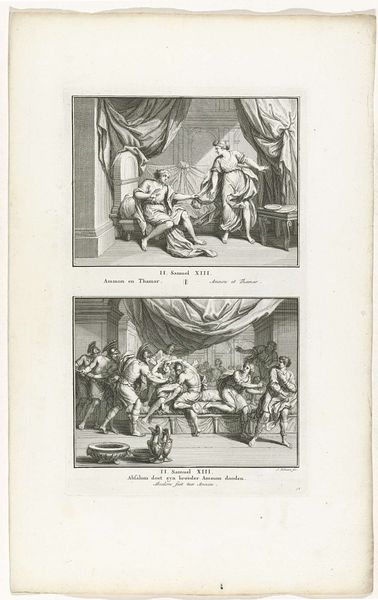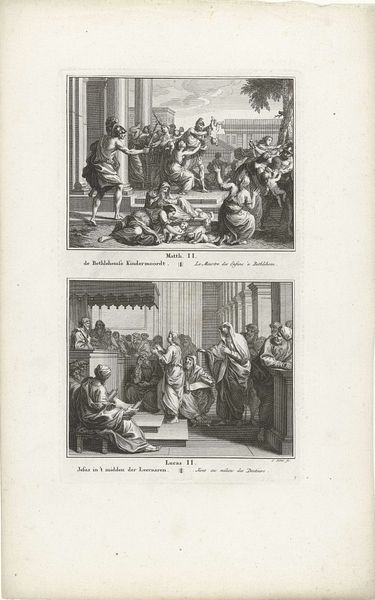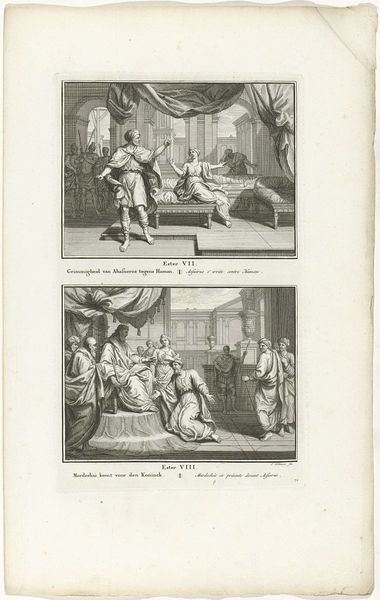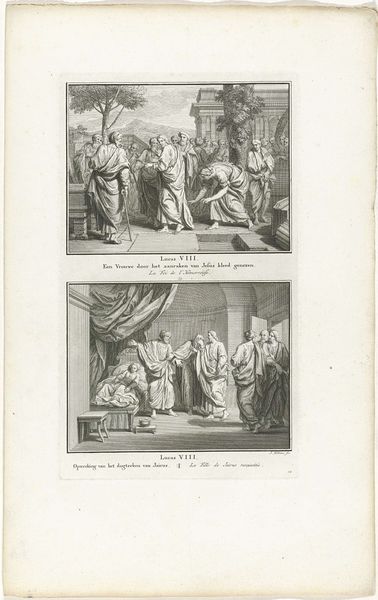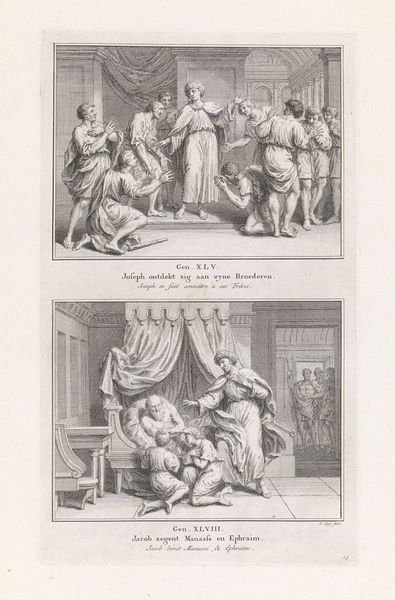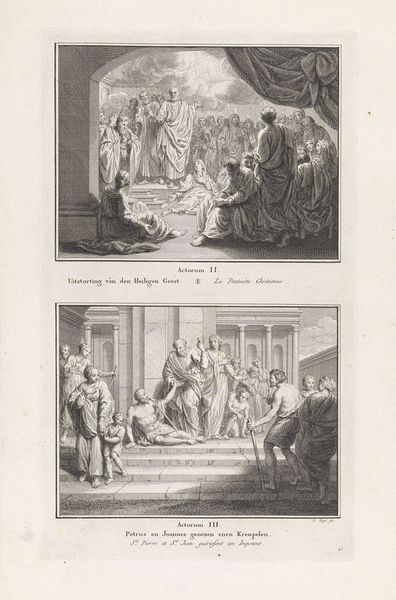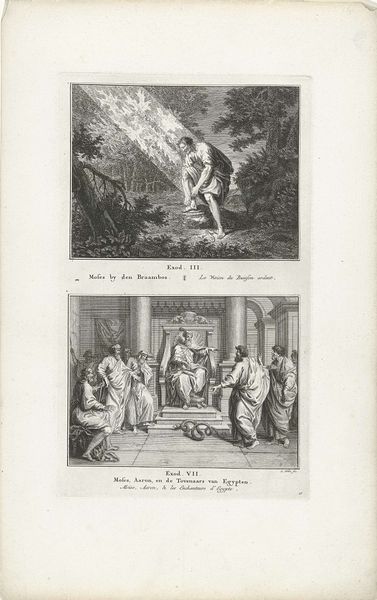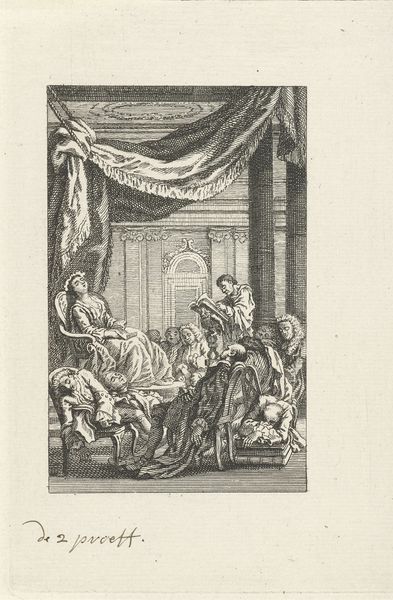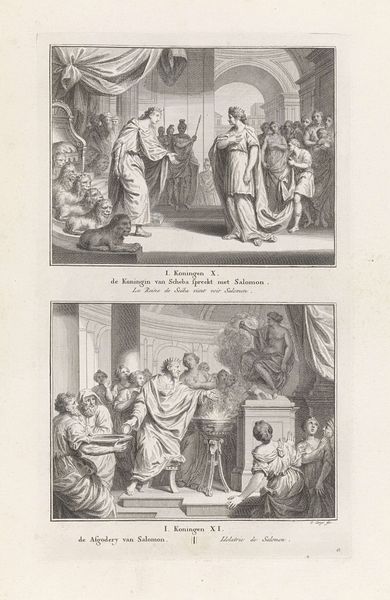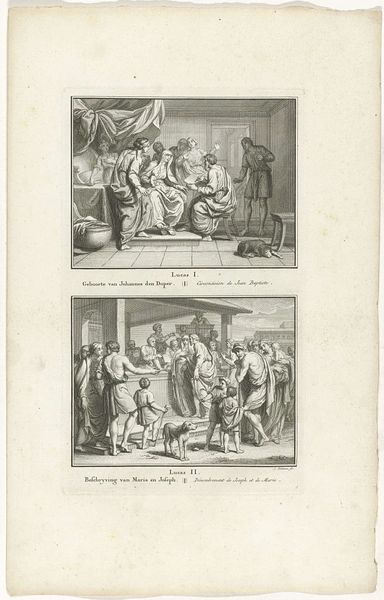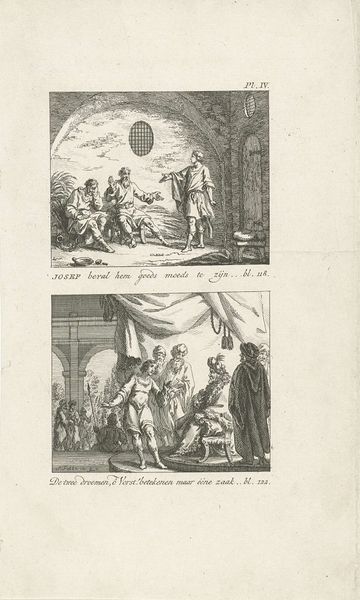
Dood van Ananias en Saffira / Genezingen door de apostelen 1716 - 1791
0:00
0:00
pietertanje
Rijksmuseum
print, engraving
#
baroque
# print
#
old engraving style
#
history-painting
#
engraving
Dimensions: height 324 mm, width 189 mm
Copyright: Rijks Museum: Open Domain
Curator: Standing before us is a baroque print dating from 1716 to 1791 by Pieter Tanjé. It’s titled “Death of Ananias and Sapphira / Healings by the Apostles," currently residing here at the Rijksmuseum. What strikes you about its formal qualities? Editor: The stark monochrome immediately projects a somber mood. It's interesting how the artist divides the composition into two distinct registers, each depicting a different moment and tonality. The figures seem to arrange themselves according to clear focal points. Curator: Absolutely. Consider the narratives at play. This piece vividly represents a patriarchal and colonial worldview embedded in its time. We witness divine punishment enacted upon those deemed deceitful in matters of communal resources. It also features miracles by the Apostles. Both suggest power structures, hierarchies, and societal control, all reflecting religious, political and colonialist agendas of the 18th century. Editor: Focusing on the semiotic relationships between line and space, notice the heavy reliance on linear precision. Each line seems carefully calculated to delineate form and evoke texture despite the lack of color, constructing a legible visual system. The lines define every muscle and crease in the robes with astonishing accuracy, even though that precision serves an agenda. Curator: Precisely. And the contrast underscores the plight of those marginalized – highlighting themes of gendered expectation, societal transgression, and the punitive measures employed against them. How might contemporary feminist theory interpret Sapphira's role here? Was her act of withholding resources a form of resistance against early forms of capitalism? These figures don’t merely occupy visual space; they inhabit a sociopolitical landscape ripe for critical deconstruction. Editor: From a purely formal point, one might look at the baroque treatment of depth in the upper section versus the implied volume rendered in the lower one. Note how differences in light and shadow interplay to shape perception. The scene above carries dramatic weight due to the staging on the stoop, creating theatrical tension that permeates throughout the rendering of individual limbs. Curator: Yes, there's a starkness in those details which, viewed through the lens of postcolonial theory, invites contemplation on whose narratives are memorialized and canonized. We should consider the unspoken dialogues within this visual archive. Editor: In terms of closure, this offers viewers distinct stylistic methods deployed within the baroque style. Curator: Which prompts critical engagement on representation, power, and agency, urging us to dissect history through our contemporary moment.
Comments
No comments
Be the first to comment and join the conversation on the ultimate creative platform.
